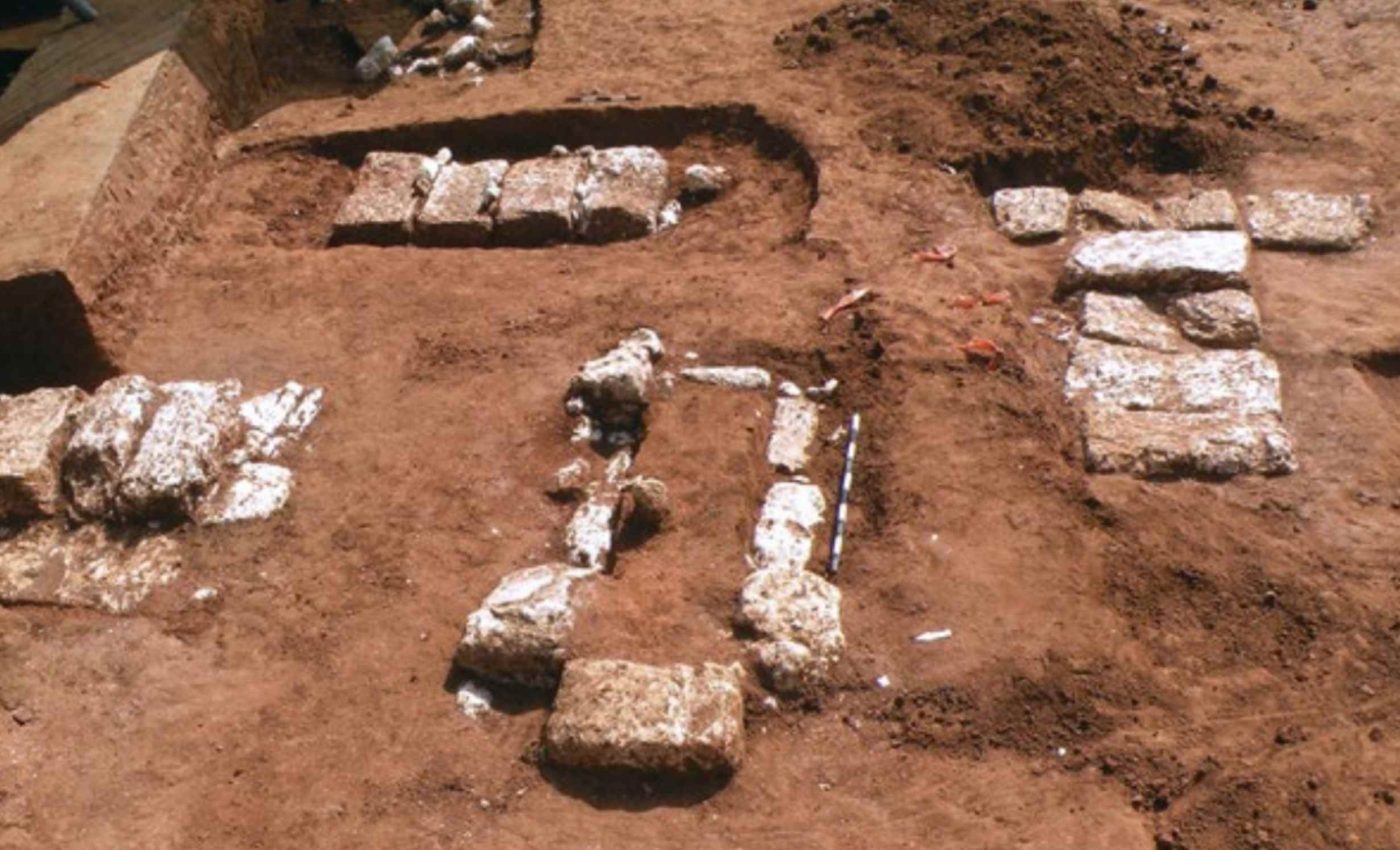
Archaeologists find mysterious Roman lion heads in Israeli tombs
Four bronze discs modeled as lion faces turned up in a cist tomb, a stone lined grave, at Khirbat Ibreika in central Israel, along with four detached rings and a dozen glass vessels.
The find dates to the first or second century A.D. and was uncovered during a salvage excavation ahead of new railroad work. Elie Haddad and Elisheva Zwiebel of Israel Antiquities Authority excavated the unusual finds.
The discs were lying in a neat pile at the narrow end of the grave. Archaeologists immediately ruled out random movement because everything else in the tomb stayed put.
Haddad’s team also recovered a single iron nail that still carried slivers of decayed wood. That nail showed a wooden coffin once occupied the chamber.
Wooden coffins and bronze lions
Most Roman lion head discs hold their ring in the animal’s mouth. At Ibreika, the ring sat on top of the mane, which is an unusual engineering choice.
Placement mattered because a ring above the head could swing freely, while a mouth ring stayed fixed. That difference hints at a job beyond decoration.
The Ibreika rings’ freedom of movement matches wear patterns on handles from other graves found in the Roman province of Syria-Palestina that once guided carrying poles.
Wooden coffins were costly, and iron nails strong enough to pierce them were rarer still. Four big bronze handles would let mourners thread two poles, lift the box, and lower it smoothly.
“If the discs were coffin handles, why were they stacked in what seems to have been a deliberate pile on one side of the tomb?” the team wrote, puzzling over why the rings in this grave were removed and stacked.
Their own answer is cautious: perhaps the handles served in a procession, were ritually detached, and buried beside, rather than on, the coffin.
What lions meant to Romans
Roman artists used the lion as shorthand for strength, vigilance, and guardianship. Stone sarcophagi from mainland Italy often show paired felines flanking the lid to watch over the soul.
In art from Persia to Greece, a lion at a doorway marked a threshold only the worthy might cross. Tomb builders borrowed that idea for the final doorway, death itself.
Persian iconologists note the animal’s link to royal power and seasonal heat, viewing the beast as a solar creature that patrols the borders between worlds.
Beyond the empire’s borders
Bronze lion heads almost identical in size to the Israeli set have surfaced in Lebanon, Syria, and Jordan. Thomas Weber’s survey mapped at least seven regional production clusters, each with small stylistic quirks.
The Ibreika carvings form an eighth group distinguished by a flattened nose, deeply incised whiskers, and a raised brow ridge. Those signatures suggest the existence of a local workshop that served coastal communities.
Nearby Tel Dor yielded another full quartet of lion discs in 2021, supporting the idea of a coastal style tied to maritime trade and adapted fashions.
Time and bronze lion crowns
Some scholars see a connection to the cult of Mithras that was popular with soldiers across the empire. Mithraic temples often display a leontocephaline statue, a nude human body with a lion head, serpent coils, and a wheel or key.
Roger Beck argues that the figure embodies cosmic time, binding seasons and stars in endless return. A ring set above a bronze lion’s crown could echo that celestial wheel.
The Ibreika rings’ placement, therefore, might carry a double function: a handle for practical chores and a nod to the cycle of life, death, and renewal treasured by initiates.
Three other Israeli burials, Ramat Efrayim, Ben ‘Ami, and Tel Dor, also held lion discs, but only one grave in each cemetery used them. The pattern hints at personal status, special belief, or both.
Most neighboring tombs belonged to Samaritan communities that generally avoided graven images. A decorated coffin would stand out, marking the occupant as someone comfortable with Roman art or foreign rites.
Samarian silver coins of the Persian period sometimes show a Persian king facing a lion, blending imperial power with local identity, and proving the motif already circulated in regional visual language.
Status and identity in bronze
Each disc weighs more than one pound and contains a high lead-tin alloy that would shine like gold when polished. Such lavish metalwork signals wealth.
Stacking the hardware may have been a statement: the deceased no longer needed earthly symbols of might, yet they were close enough to claim in the afterlife.
Lion guardians could also warn grave robbers. A pile of snarling bronze faces staring upward from the dark would have looked unsettling to anyone opening the lid.
Questions for the next dig
Haddad and Zwiebel’s study closes by admitting that the most basic question, why only one grave got the bronze lions, remains open. Future chemical analyses might trace ore sources and workshop links.
Ancient DNA from the bones, if preserved, could reveal whether the buried individual was a local notable, a traveling merchant, or even a retired legionary who carried Mithraic ideas eastward.
For now the bronze lions keep their secret, reminding researchers that a small change in handle placement can unlock wide stories about belief, trade, and identity across the Roman frontier.
The study is published in Atiqot.
—–
Like what you read? Subscribe to our newsletter for engaging articles, exclusive content, and the latest updates.
Check us out on EarthSnap, a free app brought to you by Eric Ralls and Earth.com.
—–













